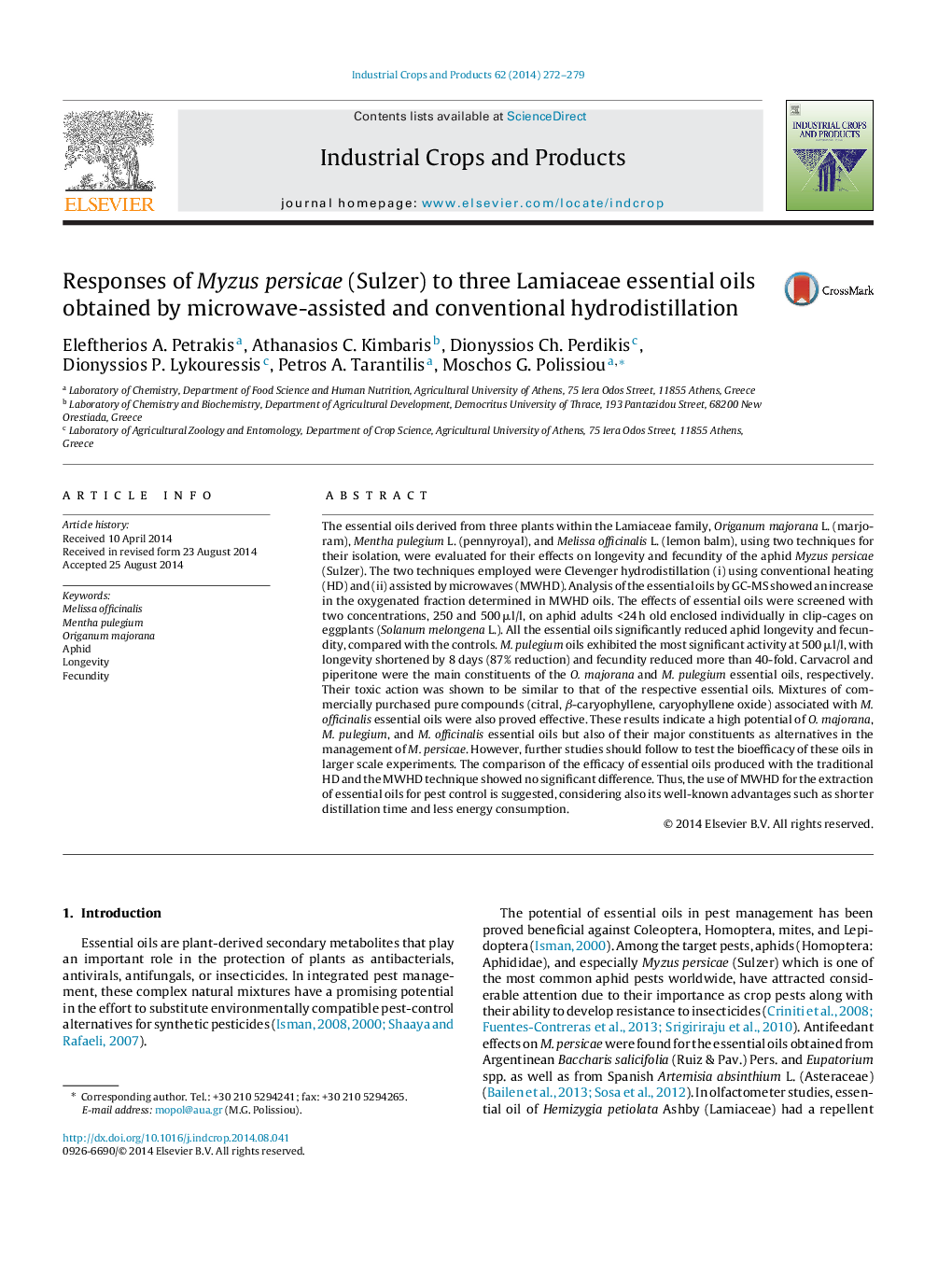| Article ID | Journal | Published Year | Pages | File Type |
|---|---|---|---|---|
| 6376432 | Industrial Crops and Products | 2014 | 8 Pages |
Abstract
The essential oils derived from three plants within the Lamiaceae family, Origanum majorana L. (marjoram), Mentha pulegium L. (pennyroyal), and Melissa officinalis L. (lemon balm), using two techniques for their isolation, were evaluated for their effects on longevity and fecundity of the aphid Myzus persicae (Sulzer). The two techniques employed were Clevenger hydrodistillation (i) using conventional heating (HD) and (ii) assisted by microwaves (MWHD). Analysis of the essential oils by GC-MS showed an increase in the oxygenated fraction determined in MWHD oils. The effects of essential oils were screened with two concentrations, 250 and 500 μl/l, on aphid adults <24 h old enclosed individually in clip-cages on eggplants (Solanum melongena L.). All the essential oils significantly reduced aphid longevity and fecundity, compared with the controls. M. pulegium oils exhibited the most significant activity at 500 μl/l, with longevity shortened by 8 days (87% reduction) and fecundity reduced more than 40-fold. Carvacrol and piperitone were the main constituents of the O. majorana and M. pulegium essential oils, respectively. Their toxic action was shown to be similar to that of the respective essential oils. Mixtures of commercially purchased pure compounds (citral, β-caryophyllene, caryophyllene oxide) associated with M. officinalis essential oils were also proved effective. These results indicate a high potential of O. majorana, M. pulegium, and M. officinalis essential oils but also of their major constituents as alternatives in the management of M. persicae. However, further studies should follow to test the bioefficacy of these oils in larger scale experiments. The comparison of the efficacy of essential oils produced with the traditional HD and the MWHD technique showed no significant difference. Thus, the use of MWHD for the extraction of essential oils for pest control is suggested, considering also its well-known advantages such as shorter distillation time and less energy consumption.
Related Topics
Life Sciences
Agricultural and Biological Sciences
Agronomy and Crop Science
Authors
Eleftherios A. Petrakis, Athanasios C. Kimbaris, Dionyssios Ch. Perdikis, Dionyssios P. Lykouressis, Petros A. Tarantilis, Moschos G. Polissiou,
